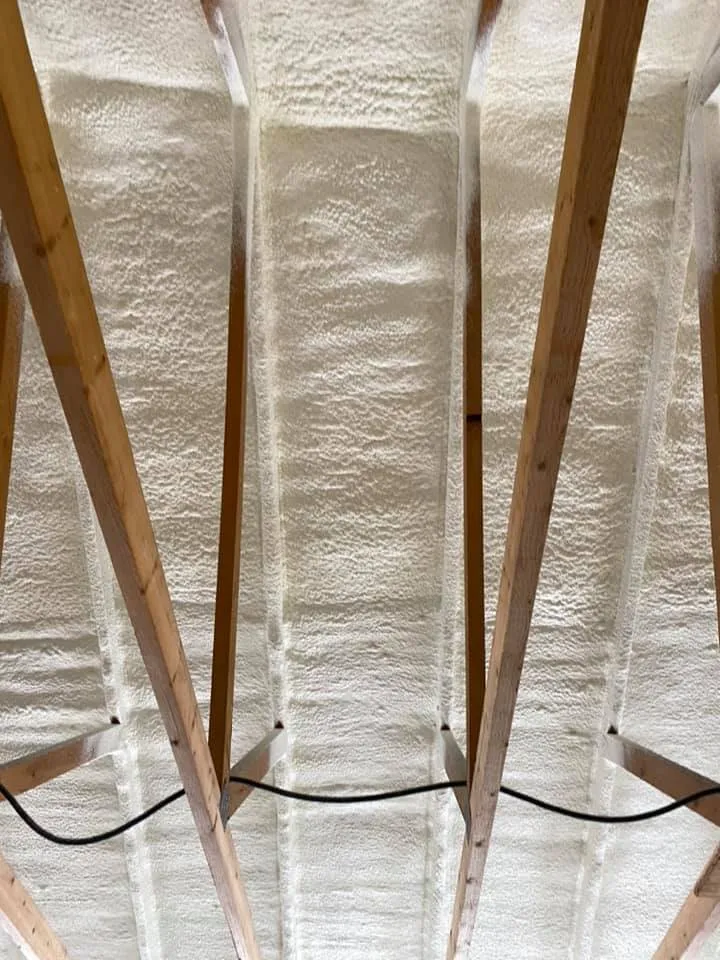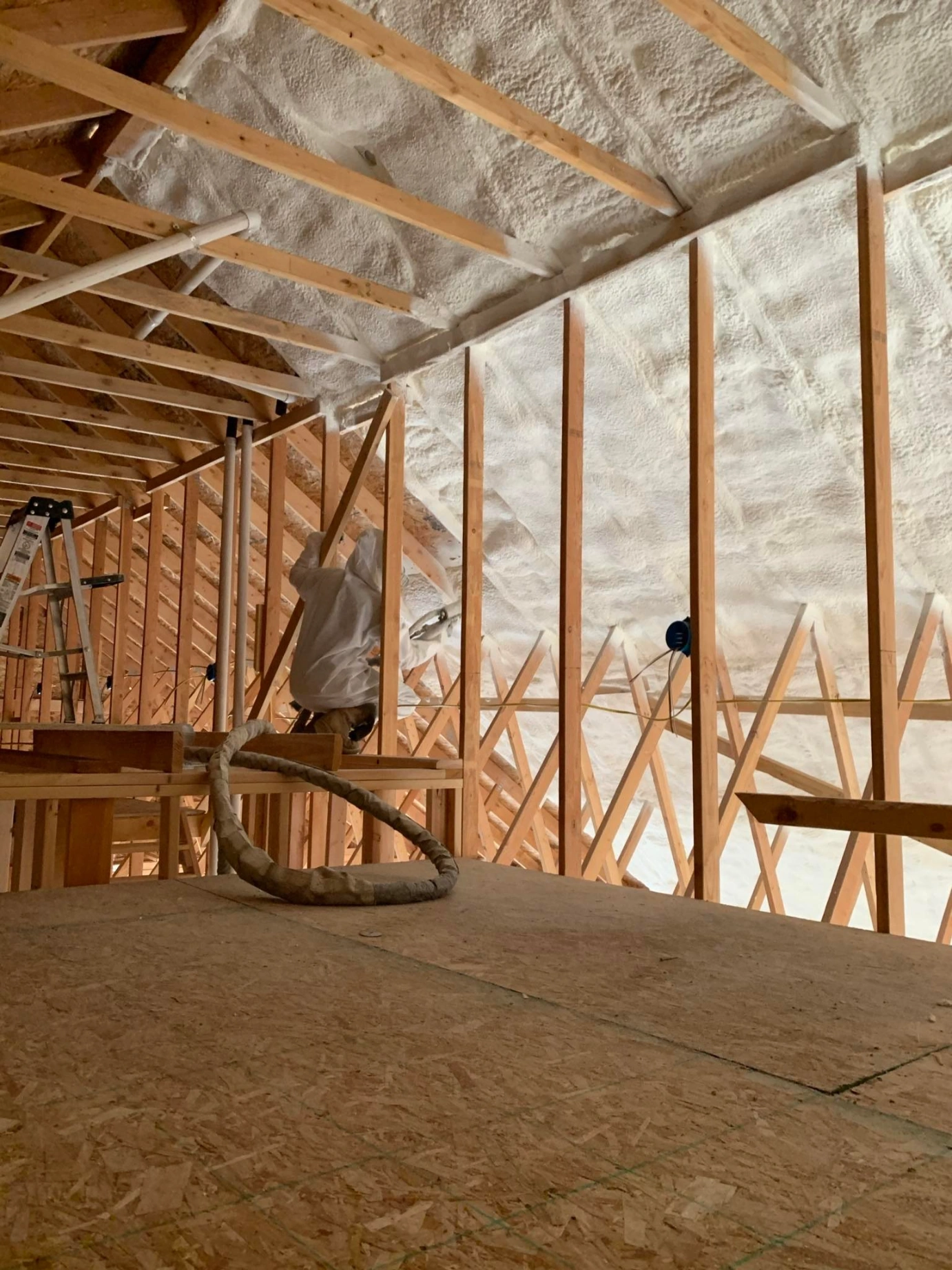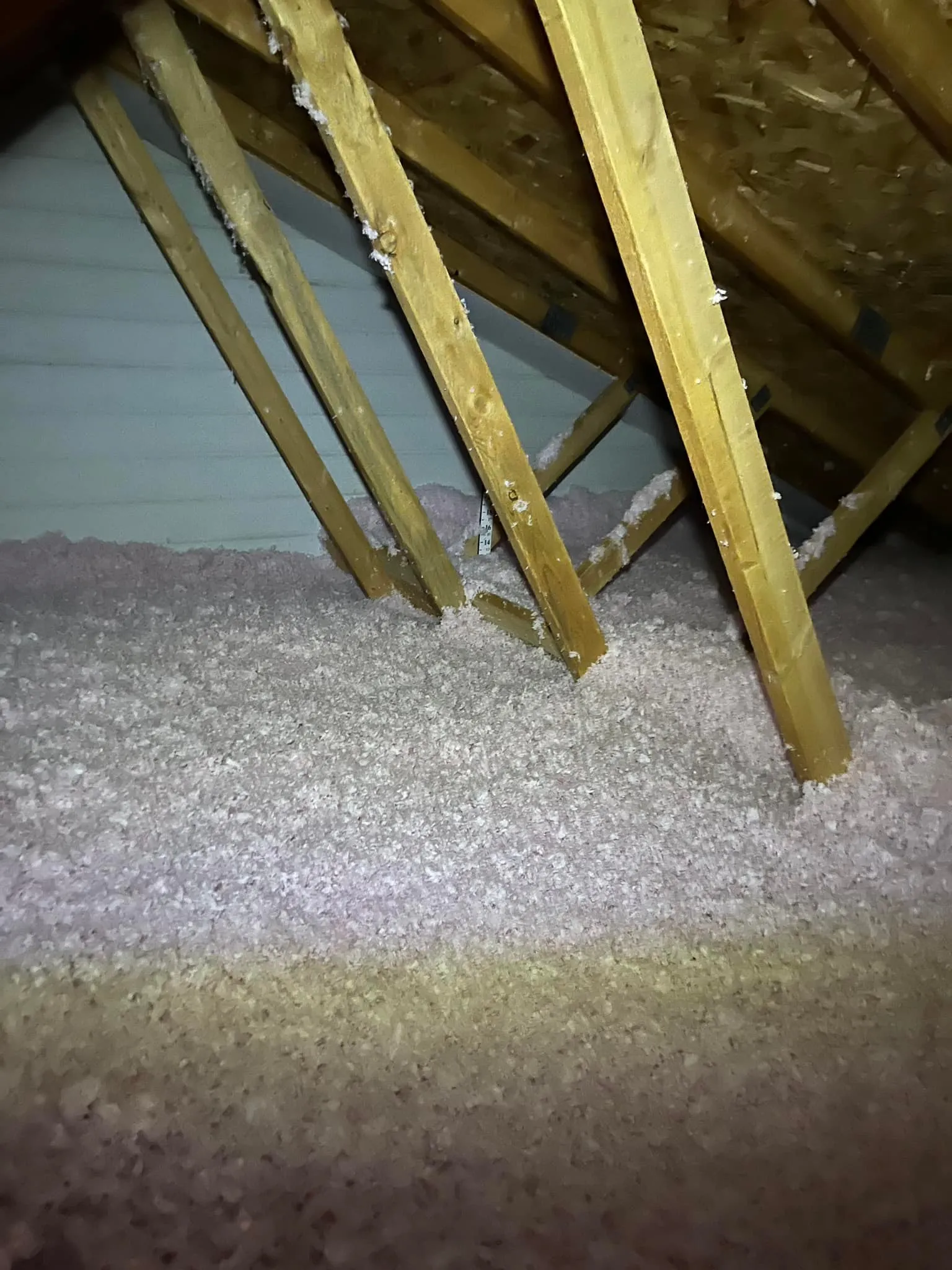

Open-cell spray foam insulation reduces the transfer of voices and other airborne sounds between rooms primarily through sound absorption. Its soft, porous, and flexible structure acts like a sponge for sound waves. When sound from a conversation hits the foam-filled wall cavity, the waves penetrate the material and become trapped within its millions of tiny air pockets. The energy of the sound wave is converted into a small amount of heat, effectively dampening the noise before it can pass through to the adjacent room.
This process is different from soundproofing, which aims to block sound completely using dense, heavy materials. Open-cell foam excels at reducing mid- to high-frequency sounds, the range where most human speech occurs. By expanding to fill every crack and crevice within a wall, it also eliminates the small gaps that sound can easily travel through, a common problem with traditional insulation batts. This detailed guide explains the mechanics behind its acoustic performance and its practical application in homes around Malad. With years of experience in insulation applications, this information is based on established building science principles and direct field observations.
Understanding how different materials manage sound is key to selecting the right one for your home. Sound control is generally divided into two main categories: sound absorption and sound blocking. Open-cell foam is a specialist in the first category.
Sound absorption involves materials that are soft and porous. They are designed to soak up sound waves within a space, reducing echo and reverberation. This is what makes a room feel quieter and prevents sound from bouncing around. Open-cell spray foam’s structure is ideal for this purpose.
Sound blocking, on the other hand, requires materials that are heavy and dense. The goal is to create a solid barrier that sound cannot easily penetrate. Drywall, concrete, and mass-loaded vinyl are examples of sound-blocking materials. While closed-cell spray foam is denser than open-cell, its primary strength is still thermal insulation, not mass-based sound blocking.
Two important ratings help quantify a material’s acoustic performance:
The effectiveness of open-cell foam comes directly from its physical makeup. When the two chemical components are mixed and sprayed, they undergo a reaction that creates a foam filled with tiny, interconnected bubbles. This structure is what gives it its unique acoustic properties.
As sound waves travel from a source, like a person talking or a television, they cause vibrations in the air. When these vibrations encounter the foam-filled wall cavity, three things happen:
Bonus Tip: Open-cell foam is particularly good at dampening the specific frequencies of human speech. This makes it an excellent choice for interior walls between bedrooms, home offices, laundry rooms, and entertainment areas where privacy is a priority.
Different insulation types offer varying levels of acoustic performance. Here’s a look at how open-cell foam compares to other common options used in Malad homes.
| Feature | Open-Cell Spray Foam | Fiberglass Batts | Mineral Wool Batts |
|---|---|---|---|
| Primary Mechanism | Sound Absorption & Air Sealing | Sound Absorption | Sound Absorption |
| Installation Method | Sprayed-in-place, expands to fill cavity | Fitted between studs, prone to gaps | Fitted between studs, denser fit than fiberglass |
| Sound Flanking Risk | Very Low (seals gaps) | High (gaps around outlets, pipes) | Moderate (better fit reduces some gaps) |
| Typical NRC | ~0.70 | ~0.55 | ~0.65 |
| Additional Benefits | Excellent air barrier, accommodates wiring with ease | Low cost, widely available | Fire-resistant, good thermal performance |

Before choosing open-cell spray foam for sound control, it’s important to evaluate several factors specific to your project.
Open-cell spray foam offers a modern and highly effective solution for reducing voice transfer between rooms. Its ability to absorb sound waves and create a complete air seal makes it superior to many traditional insulation materials for acoustic comfort. Before moving forward, evaluate your specific needs, the layout of your home, and your overall project goals to determine if it’s the right fit for you.
For a clear picture of how insulation can improve your home’s acoustics, a professional evaluation is the best path forward. If you have specific questions about a project in the Malad area, the team at High Country Solutions can provide detailed information. Contact them by phone at (307) 248-9063 or by email at [email protected] to discuss your needs.
Yes, it is very effective in floor and ceiling assemblies. Applying open-cell foam between the floor joists of an upper level can significantly reduce the transmission of footfalls, conversations, and other airborne noises to the room below.
Absolutely. The sound of running water through pipes is a common complaint. Because spray foam expands to fill the entire cavity, it can be applied around plumbing stacks and supply lines to deaden the noise of water flow and eliminate the vibration of pipes against the framing.
For standard 2×4 interior walls, filling the entire 3.5-inch cavity is standard practice and provides excellent sound-dampening results. For 2×6 walls, filling the 5.5-inch cavity offers even better performance. The key is a complete fill to maximize both absorption and air sealing.
No, the acoustic properties of open-cell foam are stable. The material is inert once cured and does not sag, settle, or decompose over time like some other insulation materials can. Its sound-dampening performance will last for the life of the building.
During application, the process releases chemical vapors, which is why professional installers use personal protective equipment and ventilate the area. Once the foam has fully cured, typically within 24 hours, it becomes inert and stable and does not off-gas, making it safe for occupants.


